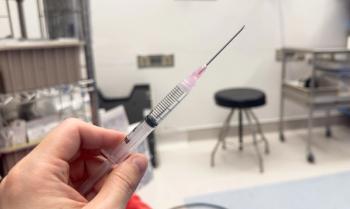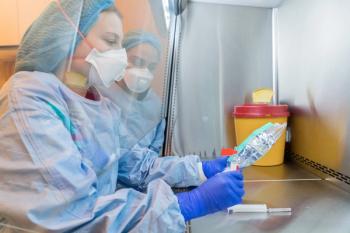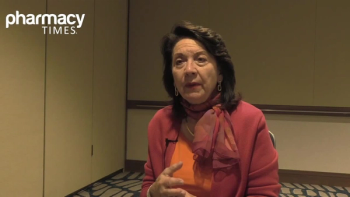
Pharmacy Practice in Focus: Oncology
- October 2022
- Volume 4
- Issue 5
Experts Review Current Treatment Space, Future Directions in Basal Cell Carcinoma
Pharmacist involvement in identifying causes and treatment approaches is essential, as BCC can be a result of prior radiation therapy.
By educating patients and providing guidance for treatment, pharmacists can play an essential role in the management of basal cell carcinoma (BCC), explained experts who gathered for a recent Pharmacy Times® Clinical Forum event to discuss their experiences in the field. Moderator Scott A. Soefje, PharmD, MBA, BCOP, FCCP, FHOPA, director of pharmacy cancer care services at Mayo Clinic in Rochester, Minnesota, led the discussion and started with a brief overview of the disease space. Soefje noted there are more patients with BCC in the United States than all other cancers combined, with BCC and squamous cell carcinoma totaling approximately 3.3 million patients. Notably, BCC accounts for approximately 80% of all skin cancers, Soefje said.
Although BCC is generally curable and rarely metastatic, it can be a devastating disease for patients. Soefje listed several risk factors for BCC, emphasizing radiation from sunlight or cancer treatments. This risk is especially notable among individuals with fair skin or those with lymphoma or other cancers who under-went radiation at a younger age. Patients can develop BCC several decades after radiation treatments for cancer, according to Soefje.
Investigators are also beginning to understand the genetics behind BCC, including new knowledge about the Sonic Hedgehog signaling pathway. “PTCH1...is a mutation associated with the nevoid [BCCs] and plays a part in [BCC] through the whole process,” Soefje said. “We also believe there are other mutations. In fact, another interesting trivia—BCC has more genetic mutations than any other solid tumor on average, at 65 mutations per 100 megabase pairs.”
When working with BCC, Soefje said the first thing to do is stratify the risk based on the location and size. These factors determine the surgical approach and whether the tumor is poorly differentiated, is more aggressive, or has perineural involvement. Patients with a history of prior recurrent disease, prior radiation, and those receiving immunosuppressive drugs are also at a high risk for more severe disease.
Melissa Pozotrigo, PharmD, BCOP, senior clinical oncology pharmacist at OncoHealth, added that in the very early stages, dermatologists may be comfortable treating BCC with topical treatments. Beyond that, dermatologists may refer patients to an oncologist while remaining involved in the multidisciplinary team.Following this overview, attendees turned to the treatment landscape in BCC. In the first line for BCC are surgical approaches, which are how solid tumors become curable. When done correctly, surgical approaches lead to high 5-year cure rates, Soefje explained.
Various surgical approaches are also available for BCC, each appropriate for different patient needs. Excising and managing the margins are typically used for patients who are low or moderate risk, whereas Mohs surgery is reserved for patients who are high risk or those who are ineligible for excision-type therapy. Electrodissection and cryosurgery may also be performed for some patients, although Soefje noted that cryosurgery tends to leave more significant blemishes that patients may elect to avoid if possible.
However, because of location or size, some patients may be ineligible for surgical approaches. Pharmaceutical approaches can include a Hedgehog (Hh) signaling pathway inhibitor such as vismodegib (Erivedge; Genentech), which is the first FDA-approved Hh signaling pathway inhibitor for the treatment of locally advanced or metastatic BCC. Sonidegib (Odomzo; Sun Pharmaceutical Industries Limited) is also available and indicated for the treatment of adults with locally advanced BCC that has recurred following surgery or radiation, or for patients who are ineligible for surgery or radiation.
Although adverse effects (AEs) are similar for both treatment options, Soefje noted they have different dosing requirements, timing recommendations with food, and drug interactions for oncology pharmacists to be aware of in relation to patient education and guidance. Additionally, several panelists noted that they almost exclusively use vismodegib with their patients, with one panelist explaining that his reasoning for this preference is due to greater concerns regarding potential drug interactions with sonidegib. For example, sonidegib should not be administered in combina-tion with strong cytochrome P450 3A4 inducers or inhibitors, which could limit the number of patients for which the drug is recommended.
Soefje also asked the panelists whether they had seen patients switch from either vismodegib or sonidegib to the other, particularly due to experiencing intolerance. The panelists explained that despite the availability of an alternative Hh signaling pathway inhibitor, they were more likely to take patients off therapy temporarily rather than switching to another option. Furthermore, after experiencing challenging AEs, some patients have also expressed hesitation about switching to another drug in the same class of medications, the panelists explained.
One of the most common AEs experienced by patients on either vismodegib or sonidegib is a loss or change in the ability to taste. In particular, difficulty tolerating foods or having foods taste bland can be a challenge, so including a nutritionist or dietitian on the multidisciplinary team could help patients maintain a healthy diet and weight.
Furthermore, muscle spasms can also be a challenge for patients on vismodegib or sonidegib, and the attendees noted that this AE can cause patients to discontinue therapy. However, amlodipine or L-carnitine can help to manage these, the panelists said.
Because of low response rates, chemotherapy is not typically recommended for patients with BCC. For these patients, immunotherapy may be a better option. Cemiplimab (Libtayo; Regeneron and Sanofi) is currently the only approved immunotherapy indicated for advanced BCC. One panelist explained that he has found the fixed-dose formulation to be convenient, especially when administered every 3 weeks. However, he noted that clinicians should remain aware of immune-related AEs and occasional infusion-related reactions that could occur.
Finally, the panelists looked at the larger picture of BCC treatment and discussed the pharmacist’s role. They all agreed that pharmacists should be involved from the beginning, even during the diagnostic phase, when pharmacists can help identify risk factors. One panelist noted some skin cancers could be drug induced, so pharmacists can be essential team members when helping to identify causes and treatment approaches.
Pharmacists are also crucial when it comes to educating patients, either about preventive measures, treatments, or financial barriers. Because of the current nursing shortage, one panelist noted that he found pharmacists were becoming even more involved in patient education than ever before, opening up new opportunities for pharmacists to demonstrate thevalue of their inclusion on multidisciplinary patient care teams.
Articles in this issue
about 3 years ago
Navigating Drug Resistance in Chronic Myelocytic Leukemiaabout 3 years ago
Controlled Substances Prescribing Goes Electronicabout 3 years ago
Prescribing Controlled Substances Goes ElectronicNewsletter
Stay informed on drug updates, treatment guidelines, and pharmacy practice trends—subscribe to Pharmacy Times for weekly clinical insights.


















































































































































































































